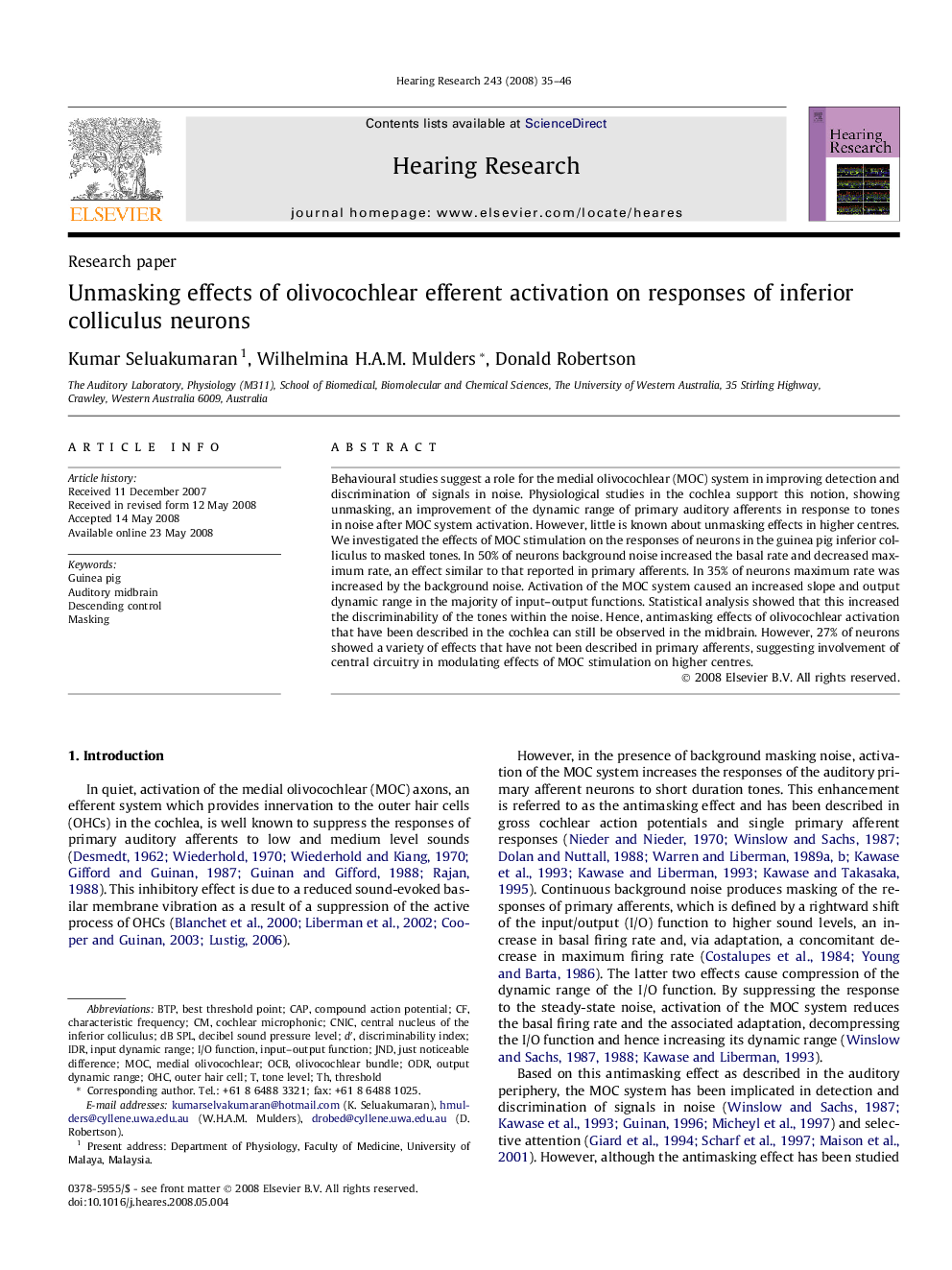| Article ID | Journal | Published Year | Pages | File Type |
|---|---|---|---|---|
| 4356037 | Hearing Research | 2008 | 12 Pages |
Behavioural studies suggest a role for the medial olivocochlear (MOC) system in improving detection and discrimination of signals in noise. Physiological studies in the cochlea support this notion, showing unmasking, an improvement of the dynamic range of primary auditory afferents in response to tones in noise after MOC system activation. However, little is known about unmasking effects in higher centres. We investigated the effects of MOC stimulation on the responses of neurons in the guinea pig inferior colliculus to masked tones. In 50% of neurons background noise increased the basal rate and decreased maximum rate, an effect similar to that reported in primary afferents. In 35% of neurons maximum rate was increased by the background noise. Activation of the MOC system caused an increased slope and output dynamic range in the majority of input–output functions. Statistical analysis showed that this increased the discriminability of the tones within the noise. Hence, antimasking effects of olivocochlear activation that have been described in the cochlea can still be observed in the midbrain. However, 27% of neurons showed a variety of effects that have not been described in primary afferents, suggesting involvement of central circuitry in modulating effects of MOC stimulation on higher centres.
